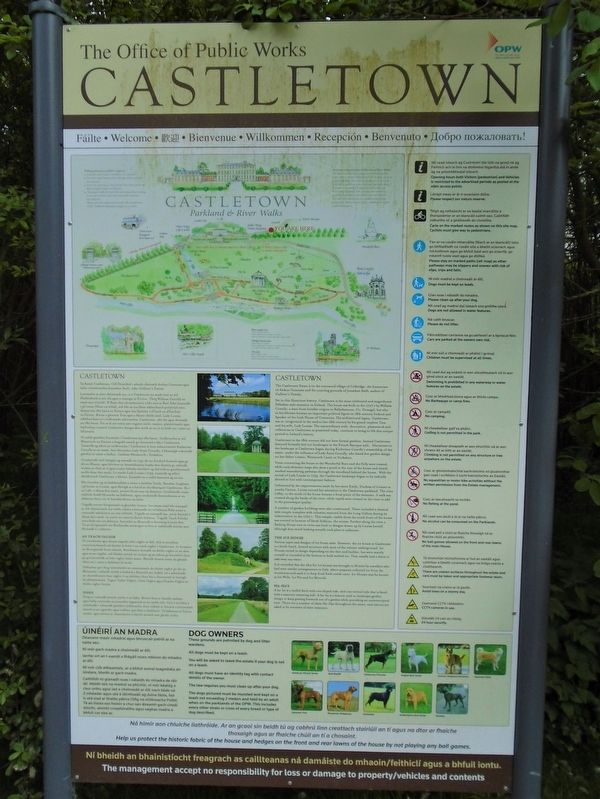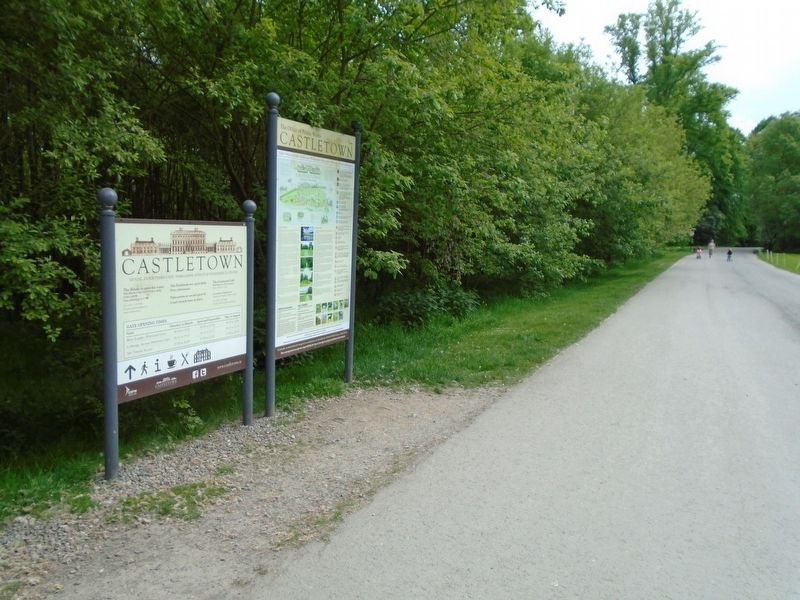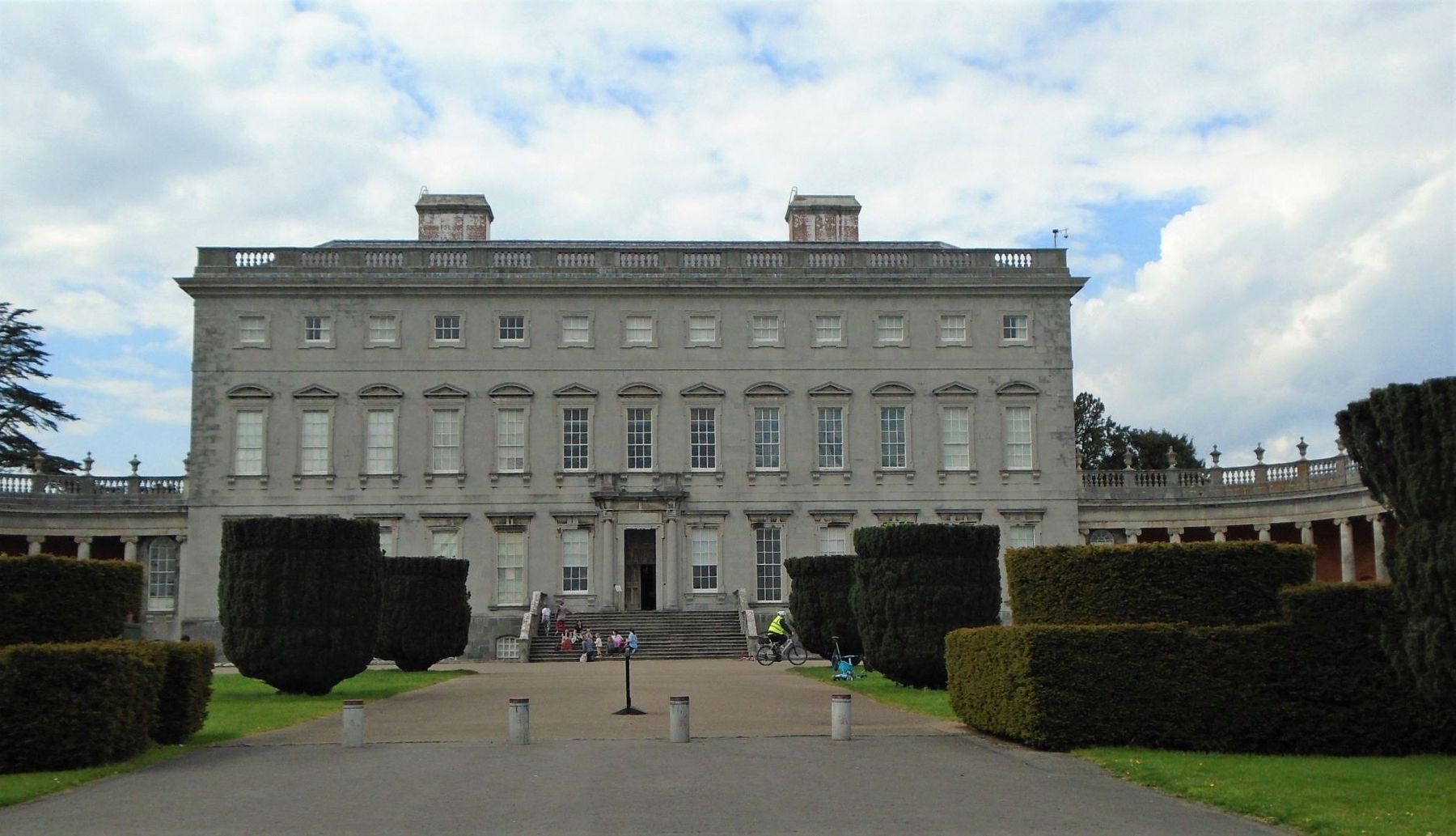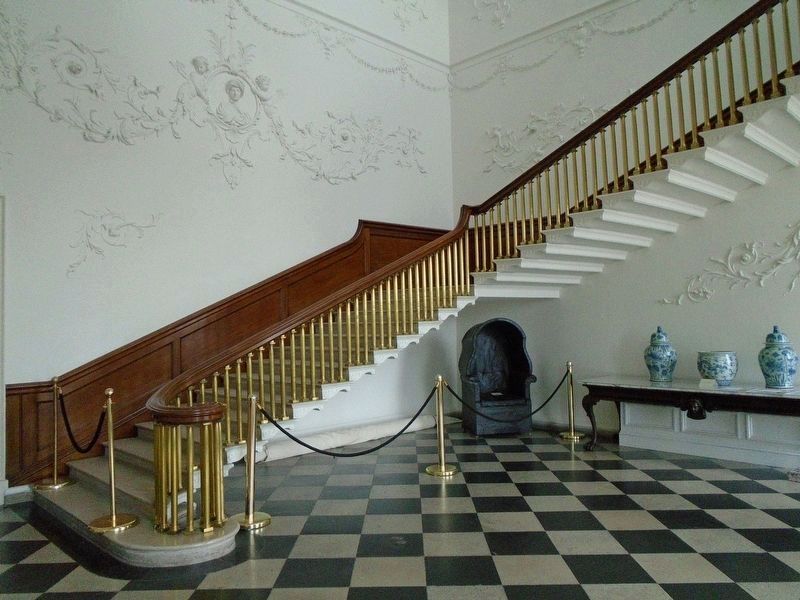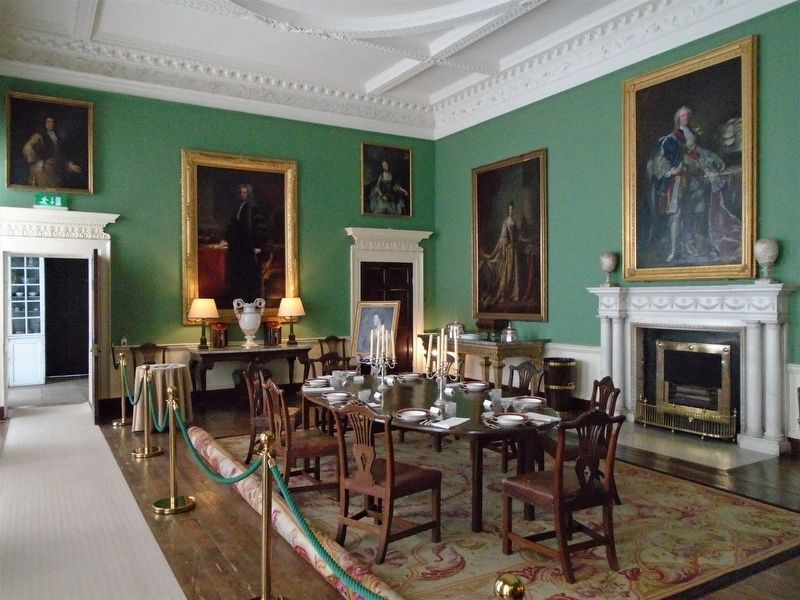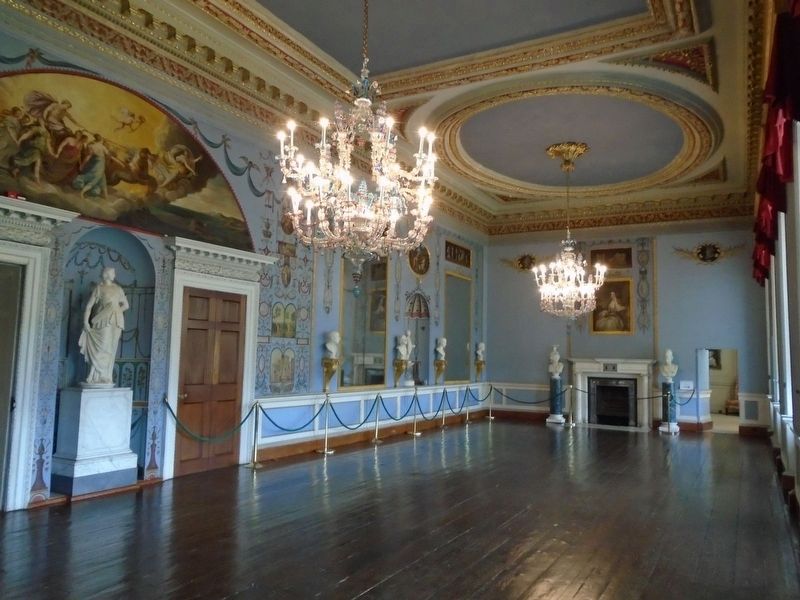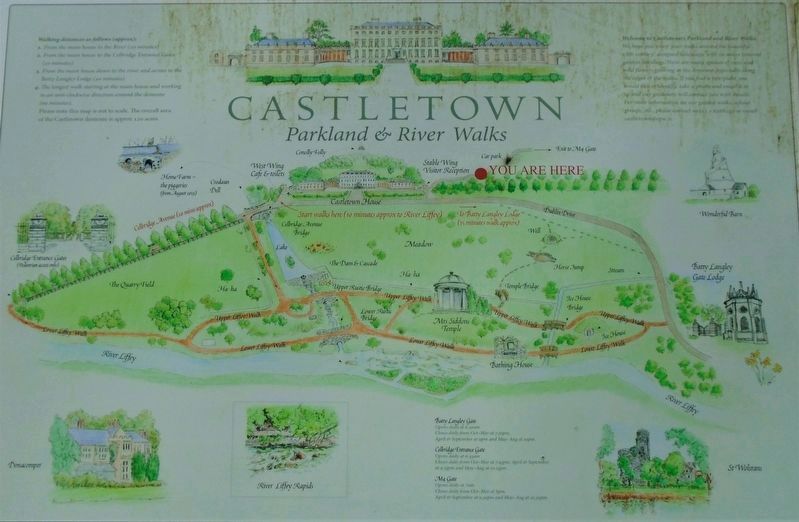Celbridge in County Kildare, Leinster, Ireland — Mid-East (and Dublin)
Castletown
Tá Eastát Castletown, Cill Droichid i mbaile clúiteach Arthur Guinness agus tailte cúirtéireachta Jonathan Swift, údar Gulliver's Travels.
Lonnaithe sa stair chlúiteach seo, is é Castletown an teach mór ar stíl Phallaidiach is mó clú agus is maorga in Éirinn. Thóg William Conolly an teach sna 1720idí. B'fhear den chosmhuintir a bhí ann as Béal Átha Seanaidh i gContae Dhún na nGall, ach bhí sé ina fhear tábhachtach polaitiúil níos déanaí san 18ú haois in Éirinn agus ina Spéicéir i dTeach na dTeachtaí in Éirinn. Rinne a gharnia Tom agus a bhean chéile siúd, Lady Louisa, athbheochan ar a oidhreacht ailtireachta, Castletown, idir lár agus deireadh an 18ú haois. Fiú sa lá átá inniu ann tugann méid, maisiú, pláistéireacht agus bailiúchán iontach Castletown léargas den scoth ar an ré ar leith seo i stair na hÉireann.
Ní raibh gairdíní foirmiúla i Castletown san 18ú haois. Tírdhreacha ar stíl Bharócach na Fraince a leagadh amach go foirmiúil a bhí i Castletown. Tosaíodh ag athrú an tírdhreacha i Castletown le linn mhaoirseacht Katherine Conolly ar an eastát, faoi thionchar Lady Anne Conolly, a bhunaigh a dearadh gairdín ar eastát a hathar, Caisleán Wentworth i Yorkshire.
Cruthaíodh caol-léargais ag nascadh an tí go dtí an Sciobóil Iontach agus go dtí an Bhaois, agus léirítear ar léarscáileanna luatha den diméin go mbíodh lochán ar chúl an tí agus cosáin lúbacha shoiléire ag dul tríd an gcoillearnach taobh thiar den teach. Le teacht Lady Louisa i 1759, tosaíodh ag athrú thírdhreach Castletown ó bhonn, bunaithe ar a raibh faiseanta ag an am.
Bhí tionchar ag na feabhsúcháin a rinne a deirfiúr Emily, Bandiúc Laighean i gCartún ar Louisa, agus dhírigh sí a haird ar choillearnach Castletown. Ba í an Life, ó dheas den teach, pointe fócais nua na diméine. Cruthaíodh cosán siúlóide feadh bhruacha na habhann, agus cruthaíodh fánsruthanna ar an abhainn chun cur le híomhá álainn na háite.
Tógadh roinnt foirgneamh sa ghairdín freisin. Ina measc siúd bhí teampall ar stíl chlasaiceach ina raibh colúin a baineadh ón nGailearaí Fada nuair a rinneadh athchóiriú air sna 1760idí. Tógadh an teampall seo, atá le feiceáil ó dheas den teach, in onóir an aisteora Sarah Siddons Tógadh Teach Folctha níos faide síos an abhainn, bunaithe ar dhearadh a tharraing Louisa féin. Tá an foirgneamh ina fhothracha anois agus ní fios ar úsáideadh mórán mar fholcadh é i ndáiríre.
AN TEACH OIGHIR
Tá cineálacha agus dearaí éagsúla tithe oighir ar fáil. Ach is struchtúr cruinneachánach atá línithe le bricí é an teach oighir i Castletown, le formhór an fhoirgnimh faoin talamh. Braitheann dearadh na dtithe oighir ar an dáta agus ar an tógálaí, ach bhídís cónúil nó cruinn ag an mbun go hiondúil chun go gcruinneodh an leac oighir leáite ansin. Bhíodh draein iontu de ghnáth chun an t-uisce a thabhairt le sruth.
Taifeadtar gur thug taistealaithe an smaoineamh do thithe oighir go dtí an Bhreatain i ndiaidh dóibh a leithéid a fheiceáil san Iodáil, áit a mbailíodh an chosmhuintir leac oighir ó na sléibhte chun bia a choinneáil úr laistigh de phluaiseanna. Tugtar Tobar Oighir, Clais Oighir agus Dumha Oighir ar thithe oighir freisin.
HÁ HÁ
Díog ar cuireadh scraith uirthi é an háhá. Bíonn fána ar thaobh amháin agus balla coinneála saoirseachta ingearach ar an taobh eile. Gné é an háhá a úsáideadh i ndearadh gairdíní tírdhreacha chun eallach ar féarach a choinneáil amach as an ngairdín agus radharc gan bhac a thabhairt. Tá háhánna ar fud an eastáit, agus iarrtar ar chuairteoirí a bheith aireach mar gheall orthu.
Set in this illustrious history, Castletown is the most celebrated and magnificent Palladian style mansion in Ireland. The house was built in the 1720's by William Conolly, a man from humble origins in Ballyshannon, Co. Donegal, but who in his lifetime became an important political figure in 18th century Ireland and Speaker of the Irish House of Commons. His architectural legacy, Castletown, was re-invigorated in the mid to late 18th century by his grand-nephew Tom and his wife, Lady Louisa. The extraordinary scale, decoration, plasterwork and collections at Castletown as presented today, continue to bring to life this unique period in Ireland's history.
Castletown in the 18th century did not have formal gardens. Instead Castletown featured formally laid out landscapes in the French Baroque style. Alterations to the landscape at Castletown began during Katherine Conolly's stewardship of the estate, under the influence of Lady Anne Conolly, who based her garden design on her father's estate, Wentworth Castle in Yorkshire.
Vistas connecting the house to the Wonderful Barn and the Folly were created, while early demense maps also show a pond at the rear of the house and clearly marked meandering pathways through the woodland behind the house. With the arrival of Lady Louisa in 1759, the Castletown landscape began to be radically altered in line with contemporary fashion.
Influenced by the improvements made by her sister Emily, Duchess of Leinster at nearby Carton, Louisa turned her attention to the Castletown parkland. The river Liffey, to the south of the house became a focal point of the demense. A walk was created along the banks of the river, while rapids were created in the river to add to the picturesque quality.
A number of garden buildings were also constructed. These included a classical style temple complete with columns removed from the Long Gallery during its redecoration in the 1760's. This temple, visible from the south front of the house was erected in honour of Sarah Siddons, the actress. Further along the river a Bathing House now in ruins was built to designs drawn up by Louisa herself, although how much bathing actually took place is unknown.
THE ICE HOUSE
Various types and designs of ice house exist. However, the ice house at Castletown is a brick-lined, domed structure with most of the volume underground. Ice Houses varied in design depending on the date and builder, but were mainly conical or rounded at the bottom to hold melted ice. They usually had a drain to take away any water.
It is recorded that the idea for ice houses was brought to Britain by travellers who had seen similar arrangements in Italy, where peasants collected ice from the mountains and used it to keep food fresh inside caves. Ice Houses may be known as Ice Wells, Ice Pits and Ice Mounds.
HA-HA'S
A ha-ha is a turfed ditch with one sloped side, and one vertical side that is faced with a masonry retaining wall. A ha-ha is a feature used in landscape garden design to keep grazing livestock out of a garden while providing an uninterrupted view. There are a number of these Ha-Has throughout the estate, and visitors are asked to be attentive of their existence.
Erected by Office of Public Works.
Topics. This historical marker is listed in these topic lists: Architecture • Colonial Era • Parks & Recreational Areas. A significant historical year for this entry is 1759.
Location. 53° 21.071′ N, 6° 31.687′ W. Marker is in Celbridge, Leinster, in County Kildare. Marker is along the path leading from the car park to Castletown House. Touch for map. Marker is in this post office area: Celbridge, Leinster W23 V9H3, Ireland. Touch for directions.
Other nearby markers. At least 8 other markers are within walking distance of this marker. A Brief History of Celbridge Poor Law Union (approx. 1.2 kilometers away); Celbridge Union Workhouse Cemetery (approx. 1.2 kilometers away); Celbridge Union Workhouse Cemetery Gate (approx. 1.2 kilometers away); Welcome to Celbridge (approx. 1.3 kilometers away); Arthur's Way / Cosán Arthur (approx. 1.3 kilometers away); Kildrought House (approx. 1.4 kilometers away); Sir Gerald Dease, K.C.V.O. (approx. 1.5 kilometers away); Edward Bridgeman (approx. 1.5 kilometers away). Touch for a list and map of all markers in Celbridge.
Also see . . . Castletown. (Submitted on December 11, 2019, by William Fischer, Jr. of Scranton, Pennsylvania.)
Credits. This page was last revised on January 1, 2024. It was originally submitted on December 11, 2019, by William Fischer, Jr. of Scranton, Pennsylvania. This page has been viewed 113 times since then and 3 times this year. Photos: 1, 2, 3, 4, 5, 6, 7. submitted on December 14, 2019, by William Fischer, Jr. of Scranton, Pennsylvania.
